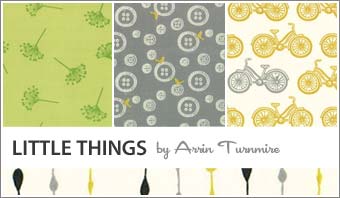Top 9 Reasons I Love Organic Fabric
April 04, 2014
You don’t have to be a card-carrying environmentalist
More and more mainstream consumers are choosing organic fiber because of the benefits organic farming has on the soil, the people who produce the fabric, and themselves. Organics are good for us from so many perspectives - no matter who you are.

What’s missing?
It’s what’s not in our hemp and organic cotton fabrics that makes them so easy to love. No synthetic chemicals are used. No poisons to contaminate the soil and ground water. No toxic dyes, formaldehyde, or heavy metals to wear against our skin (ew!).

Good for the soil
Organic farming employs crop rotation and organic matter to replenish the soil and increase moisture retention. Absolutely no synthetic chemicals are used. That’s important because 80% of our planet’s biodiversity lives in soil!

My projects deserve the best
I invest a lot of time and care in my projects. They are a labor of love deserving a high quality base cloth. Organic fabric is the perfect foundation for creating something from the heart.

It’s not the wedding china
Sure, organically-produced fibers are better-stronger-softer-cleaner than their conventional counterparts, but you don’t need to reserve them for special occasions. Use them everyday. Do everything and more with organics that you would do with any fabric. Relax and be yourself.

Organics put people to work
Because chemically-laden shortcuts are not employed in organic farming, more people are put to work tending the crop. And because organically-grown tends to be synonymous with socially-responsible, farmers are compensated fairly.

Hemp is so easy to love
Hemp is naturally pest-resistant. It is a dense growing plant that doesn’t allow light to penetrate, substantially reducing weed growth. It’s an ideal rotation crop because of its long taproot. It’s also not very thirsty, eliminating the need for irrigation. Bottom-line: no pesticides; no herbicides; naturally replenishes the soil; conserves water. Seriously, what’s not to love?

Hemp makes a great fabric
When blended with other fibers, including lyocel and organic cotton, hemp material can me made up to linen grade. It is soft, pliable and a real pleasure to work with and wear. 100% hemp fibers are extremely strong, resilient and uber versatile.

... And it can do just about anything
Hemp is extremely versatile. It grows in a larger variety of climates than cotton; it’s also not nearly as thirsty and yields four times the dry fiber per acre than the average forestry crop. It’s been cultivated for thousands of years. These days there are over 25,000 different products that can be made with hemp and not one of them will get you high. Hemp is often associated with its close relative, marijuana, but it has only a tiny fraction of the psychoactive ingredient THC that marijuana does.



















































